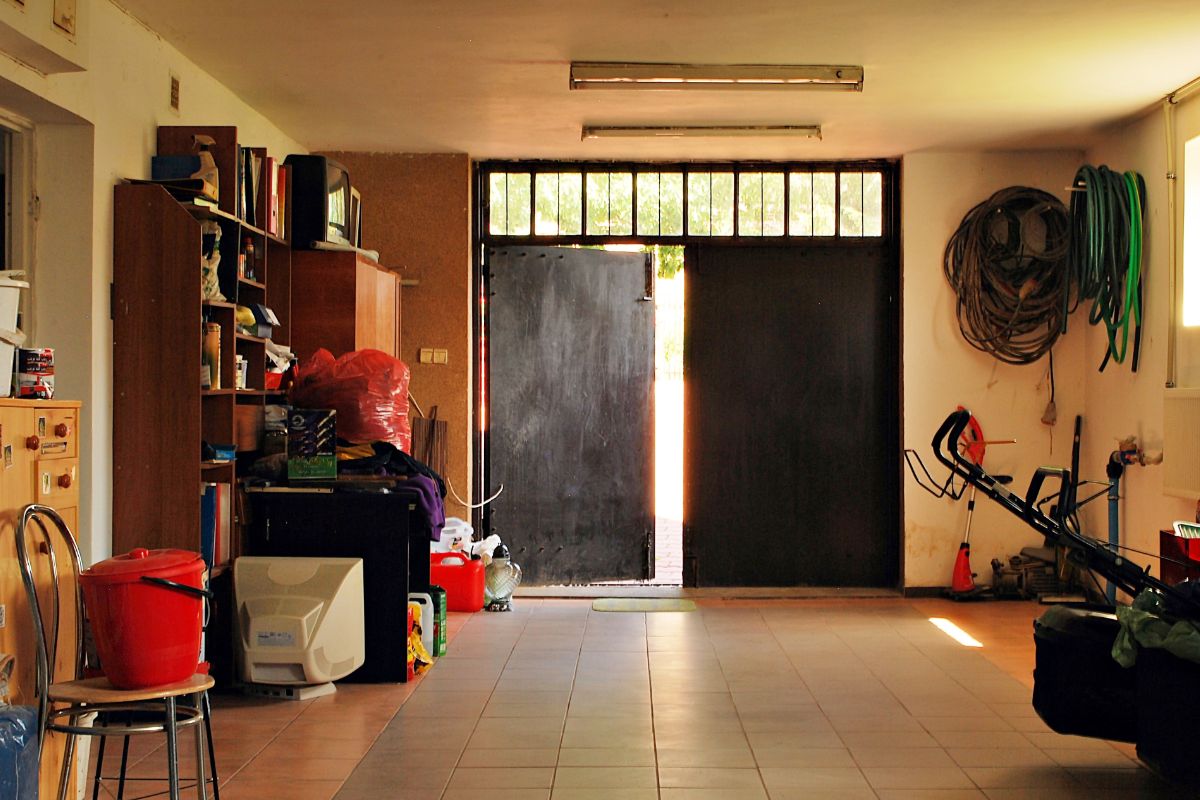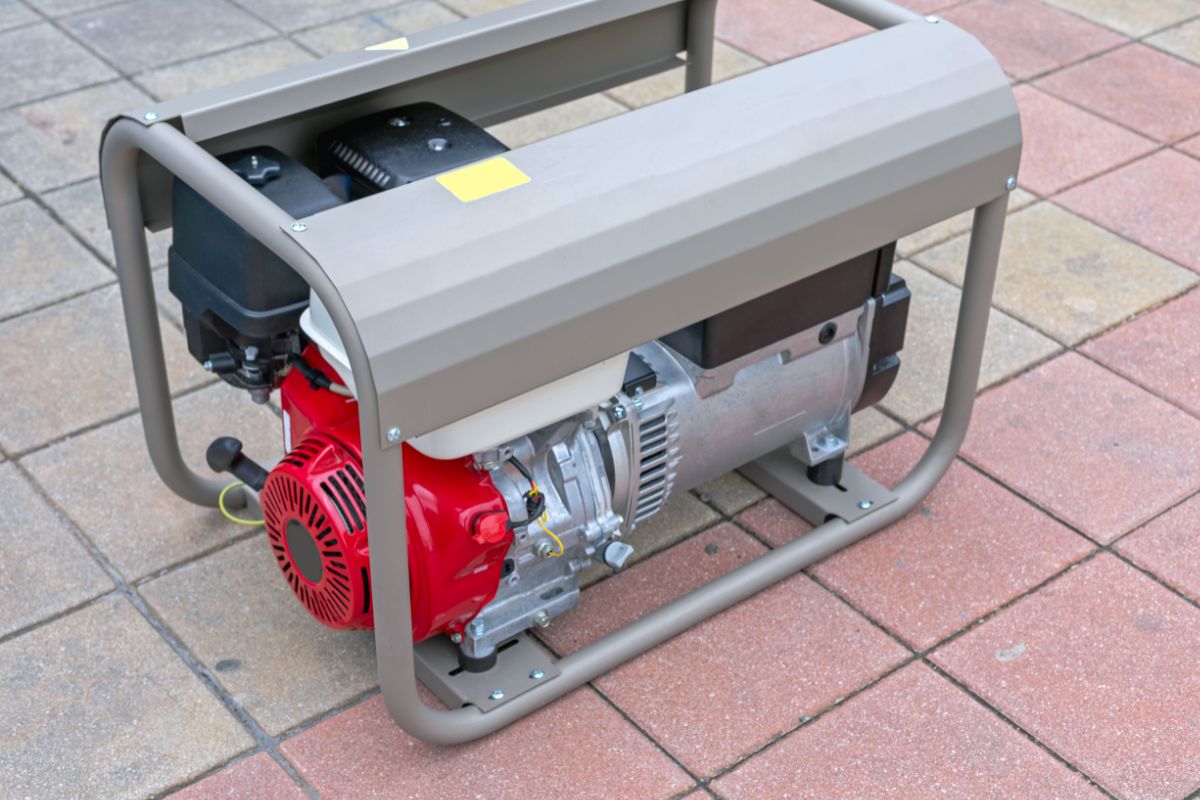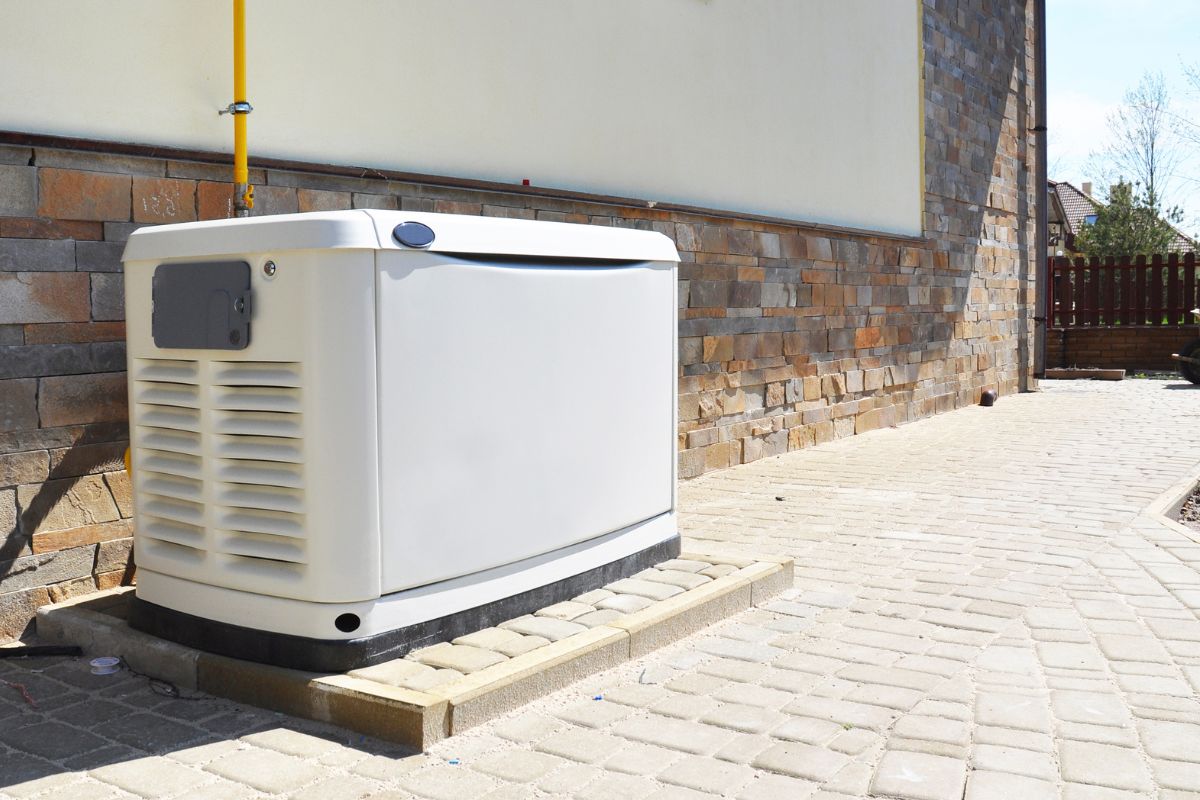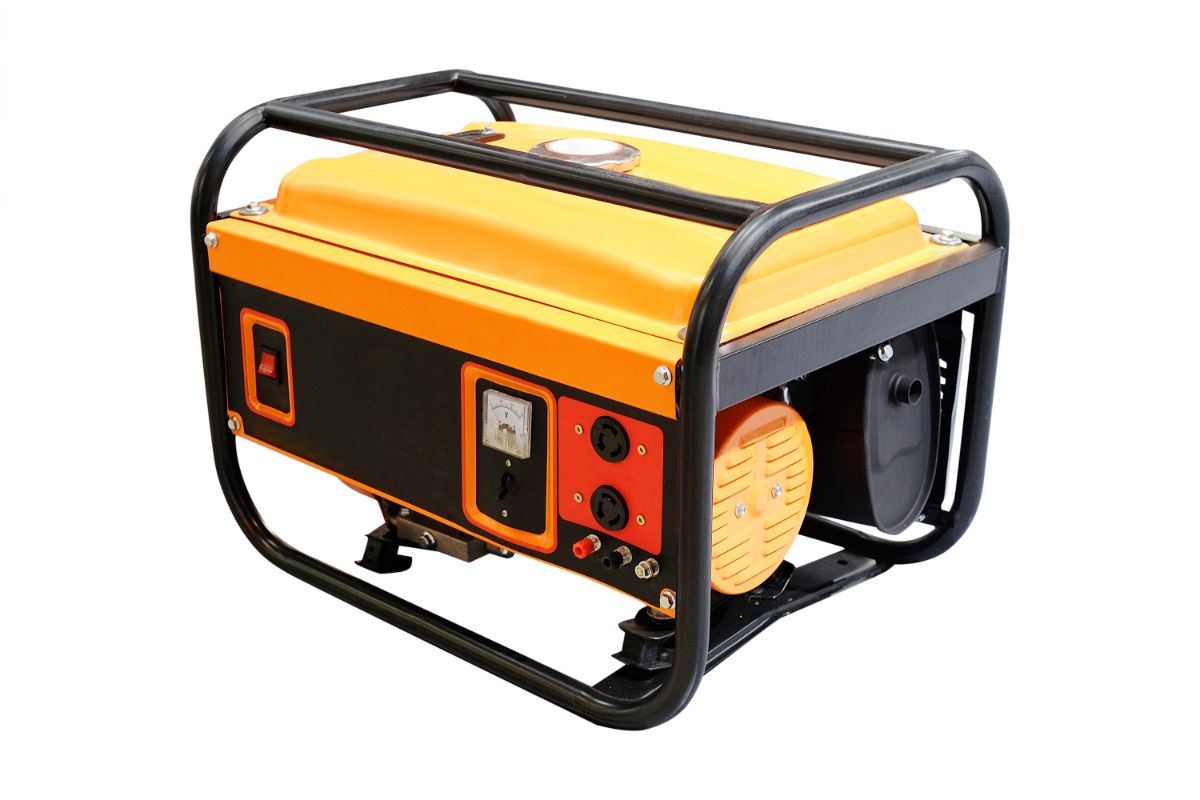Although it can be quite fun, cutting down trees with a chainsaw is never pleasant. Not only are you destroying the very organism that gives us oxygen to breathe, your saw is spewing out the toxic fumes the tree would use to produce clean, breathable air — the irony is not lost on me

Considering the ever-worsening climate crisis we face not just as a species, but as Earthlings in general, using a gas-guzzling chainsaw isn’t all that responsible, and in the past cordless electric models just didn’t have the power to replace them. But today’s a new day!
Cordless chainsaws are now far more powerful than ever before, capable of making light work of tough tasks and girthy trunks — without toxic emissions! And after some meticulous research and testing, I’ve composed this list of the very best you can buy.
Best Cordless Chainsaw: Reviews
OUR TOP PICK
DeWalt 20 V MAX XR 12” Cordless Chainsaw
EDITORS CHOICE
Black+Decker LCS1020 20 V 10” Cordless Chainsaw
BEST VALUE
Power Ratio – Greenworks 20 V 12” Cordless Chainsaw
OUR TOP PICK
DeWalt 20 V MAX XR 12” Cordless Chainsaw
Best Overall
Kicking things off, we have the MAX XR 12” from industry stalwarts, DeWalt. This saw arrives with a 12” bar, which is a versatile length that’s effective for both limbing and cutting down small trees.
At 9 lbs (with battery), it’s an insanely light chainsaw, making it easier to control in general and easier to handle over the course of longer jobs.
During testing, I found it to be perfectly balanced as well — no back or front tilt!
At the heart of this saw whirs a high quality brushless motor offering a quiet, powerful, and long-lasting performance. Combined with the aftermarket 5 Ah battery, you’re looking at 90 cuts from a single charge.
It also features a tool-free adjustment system, so you can fine-tune it on the fly, even if you forget your tools. My only real gripe is that it doesn’t come with a battery or charger.
Pros
- 12” bar — Great for multiple applications
- 9 lbs and well balanced — Effortless to use
- Brushless — Quiet, powerful, and durable
- Tool-free adjustment — Much more efficient than “scrench” models
Cons
- Aftermarket purchases — Battery and charger sold separately
Also available from…
EDITORS CHOICE
Black+Decker LCS1020 20 V 10” Cordless Chainsaw
Best Budget Pick
With a 10” bar, this ferocious little saw is not exactly built for taking down giant redwoods, but it’s the perfect helper for limbing smaller trees efficiently and effectively.
It’s a completely tool-free system, so if this is your first chainsaw, you won’t need to shop around for additional equipment to keep it in tip-top condition.
At 6.8 lbs, it’s also ridiculously lightweight, so you can forget about post-job fatigue.
There’s also an oil window that shows you precisely how much oil you have left in the tank, so you don’t have to worry about the guesswork that comes with a windowless saw.
The opening of the oil reservoir is a decent size too, which cuts down on spillages in the field.
Although I’m certainly not a beginner myself, one thing I picked up on is just how perfect this saw would be for someone cutting their teeth, as, on top of all the user-friendly features I’ve already mentioned, it comes with a low kickback bar and chain.
This is exactly the kind of safety feature that’s going to help newbies feel at ease and cut with confidence. Plus, that price tag is a real head-turner!
Pros
- 6.8 lbs — You’ll barely notice you’re holding it
- Tool-free adjustment — Easy to prime for a cut on the fly
- Oil window — Takes the guesswork out of replenishing oil
- Price — Insane value for money
Cons
- 10” bar — Not particularly suitable for felling trees
Also available from…
BEST VALUE
Greenworks 20 V 12” Cordless Chainsaw
Best Weight-To-Power Ratio
This chainsaw from Greenworks is something of a contradiction. It arrives with a mean 12” bar for felling small trees, limbing, and cutting firewood efficiently.
It has a 3/8″ pitch for buttery smooth cutting with minimal kickback.
And, it brings a beefy 40 V 2 Ah battery to the table. Yet, it weighs a minuscule 6 lbs, which is nuts!
During my tests, I found it to be one of the most easy-to-handle saws I’ve ever had the pleasure of using.
The combination of power and manageability makes for a cleaner cut, and a quicker job overall.
Although not quite as affordable as the LCS1020 we just discussed, it is an objectively low-priced saw, yet it’s a tool-free design, offers a fantastic oil window to keep you in the loop in regard to chain lubrication, and the wrap-around handle is thick and comfortable.
If I’m being picky, I’d have preferred a longer trigger for a cozier grip, but the trigger design was flush to the handle when depressed, and worked very well.
Pros
- 12” — Good for both felling small trees and limbing
- 6 lbs — Easy to maneuver and hold for long periods of time
- Oil window — No lubrication guesswork involved
- Tool-free — Adjust with on-unit facilities only
- 3/8″ pitch — Smooth cut with less chance of kickback
Cons
- Trigger — A longer trigger would be more comfortable
RUNNER UP
Greenworks G-MAX 40 V 16” Cordless Chainsaw
Best For Felling
Staying with Greenworks, we have a very similar design to the 12” saw detailed above, but this one’s much bigger and much meaner, making it the perfect cordless option for felling small to medium-sized trees.
The 16” bar is highly capable of cutting trunks and limbs up to 14” in diameter. It has a brushless motor for a quieter, long-lasting, high-torque performance.
During my tests, I found that it cuts like an absolute dream, and with far less vibration than your average gas-powered saw.
I also loved the fact that it arrived with some metal bucking spikes to increase the efficiency of a cut, although they’re a little on the small side.
And for those worried about safety, the high quality auto chain brake should instill peace of mind, ensuring the chain will halt in the unlikely event of a kickback.
Pros
- 16” — This is proper felling territory
- Tool-free — No need to carry your tools with you
- Brushless — higher torque for a quicker, cleaner cut
- Chain brake — Keeps you safe during severe kickback
- Bucking spikes — Encourages good form and efficient cuts
Cons
- Leaks — I saw a tiny bit of leakage when testing, but this could be an isolated occurrence.
Also available from…
RUNNER UP
Bei & Hong Mini Chainsaw
Best Handheld
Perhaps you’re only looking for a helping hand with some limbing or cutting thin firewood? If so, then this mini, handheld saw from Bei & Hong is exactly what you need.
With a 6” bar, it’s perfect for making short work of limbs of varying sizes, and the fact it can be operated by one hand makes it a godsend when you’re working with some awkward angles or up a ladder.
Yet despite its user-friendly design, it’s no less safe than some of the more heavy-duty chainsaws on this list. It has a switch-lock to combat accidental activation, and a baffle to protect against debris. Plus, a pair of goggles come as standard.
During my tests, I found that it could tackle 6” limbs without breaking a sweat, making it an awesome tool to have handy for general yard maintenance.
In terms of runtime, I clocked it in at 70 minutes of near-constant usage, but this varies depending on the wood in question, and a recharge takes between 2 and 3 hours depending on the depth of discharge.
Pros
- 2 lbs — Use with one hand
- 60–90 minute runtime — Get loads done with a single charge
- Price — Very affordable
- Safety features — Protection from debris and accidental activation
Cons
- Limbing only — Not the most powerful or versatile bit of kit
Buyer’s Guide
How Do You Charge A Cordless Chainsaw?
The battery on your cordless chainsaw is almost certainly situated beneath the rear handle, as there’s really nowhere else for it to go.
To charge it, you’ll need to first remove it from the body of the saw. The release mechanism will be slightly different from model to model, so be sure to consult your user manual for specifics.
However, generally speaking, there’ll be some sort of latch that you push (possibly two) that will release the battery from its port.
Then, simply slide it out, take it indoors with you, plug it into the charging station (which should arrive with the saw), and plug the charging station into a standard wall outlet.
Give it time to pull a full charge, then unplug the charging station to prevent overcharge damage.
Are Cordless Chainsaws Green?
While the grid energy used to power cordless chainsaws isn’t entirely green (yet!), these nifty devices are absolutely, unequivocally, 100% more green than chainsaws that use fossil fuels.
Cordless chainsaws will not contribute to worsening carbon emissions, and as they’re a lot quieter, they also cut down on noise pollution significantly, which is sure to keep nearby neighbors happy.
Are Cordless Chainsaws Energy Efficient?
One of the best things about cordless chainsaws is their energy efficiency. These things are fantastic for saving money on fuel, as grid electricity is much more affordable.
Performance: How Is It Measured?
In terms of the ability of a battery-powered chainsaw, you should be considering both cutting speed and torque. That said, you shouldn’t completely ignore voltage, as that too plays a part in the power of a saw.
Chain speed is measured in inches per minute. The higher the chain speed, combined with high torque, the more able a saw will be to tackle thick hardwoods.
Charge Strength
The runtime of battery-powered chainsaws will vary from model to model, but, on average, you can expect anywhere between 20 and 30 minutes per charge.
If you need more time, I’d recommend choosing a saw that arrives with fast-charge technology and investing in a second battery that you can use when your first runs out of juice.
To get a general sense of how long a chainsaw battery will last, you should consider the watt hours.
If the manufacturer doesn’t provide this measurement, you can figure it out by multiplying the volts by the amp hours.
Charge Duration
You should expect something to the tune of 1 hour and beyond for a full recharge of your cordless chainsaw battery. It all comes down to the battery quality and capacity.
While larger batteries will give you an extended runtime, which is great for large jobs, for the most part, they’ll require a longer charging session to recoup power.
Trigger System
Cordless chainsaws are fired up using a trigger system. Sometimes this will be a 2-stage system that you can activate with a single hand, while others may spread the 2 stages out between the two handles, meaning you have to use both hands to start the saw. Others still may have a 3-factor trigger mechanism.
The good news is that, while a 3-stage system will be the safest, none of these systems are unsafe, which means all you have to do is pick the one that you prefer. And keep in mind that saws with more elaborate trigger systems may be trickier to use in awkward positions.
Adjustment Method
As you may already be aware, the bar of your saw will need to be adjusted before almost every use, especially when new. There are two types of adjustment method: tool-free and “scrench”.
Tool-free adjustment saws are exactly what they sound like — you can adjust them by hand, no tool necessary.
Scrench is a portmanteau of screwdriver and wrench, and refers to a combination tool. For any chainsaws that do not have tool-free adjustment, you’ll use one of these to get the job done.
Obviously, tool-free adjustment is easier, and you don’t have to bring your scrench with you in the field, but is this the whole story?…
What’s The Deal With Dual Studs?
Tool-free saws will typically have a single stud connecting the saw and bar. Scrench adjusters will use dual studs. Some will claim that dual studs are an indication of pro-grade quality, but this is only true when it comes to the really big, really powerful saws.
So, to sum up, yes tool-free is your best bet.
Free Nuts Vs Captive Nuts
Free bar nuts inevitably come loose and get lost from time to time when you’re in the field. To combat this minor irritation, some saws arrive with captive nuts that physically cannot come loose.
Gauge & Pitch
Gauge is all about the strength of the drive links in the chain. The higher the gauge, the stronger the links. Pitch refers to the size of the chain, or more specifically, the distance between three rivets in a row.
Unless you’re planning on doing some truly intensive work with your saw, you can stick to the common commercial gauges and pitches:
- Gauges: 0.325”, 3/8″, 0.404” (sometimes 1/4″)
- Pitch: 3/8″
Oil Window
Chainsaws need oil to function properly, lots of it!, which is why it’s best to choose a model with a little oil capacity window that shows you how much oil you’ve got left in the reservoir.
Without one of these, you’ll have to top up the oil frequently to make sure you never run out.
Oil Cap
You’ll likely be wearing some pretty chunky protective gloves when you’re in the field, so it pays to find a model that has an oil cop with aggressive lugs for you to grip onto without removing your protective garments.
Bucking Spikes: What Are They For?
Otherwise known as bumper spikes, bucking spikes are pointed panels attached either side of the bar, just beyond the enclosure of the saw.
They allow you to lift the bar rather than push down on it, making for a smoother, more efficient cut.
Weight & Balance
A lighter saw is both easier to use for longer periods and easier to transport. However, the larger the bar and battery, the more powerful your saw will be. You have to decide on a balance of sorts.
And speaking of balance, it’s far more important than the weight of a chainsaw. When holding your saw by the middle handle, it shouldn’t tilt forwards or backwards.
Granted some tilt on the bar side isn’t a dealbreaker, but tilt towards the rear handle means it’s harder to use in general, and harder to use safely.
Handle Design
Generally speaking, thicker handles offer more comfort, as there’s more surface area to hold on to. Rubber handles are even better, as they give you more grip and reduce vibration transmission.
Trigger Design
If possible, you want your trigger to rest flush with the handle when depressed. This will be more comfortable than having to keep a partially raised trigger activated.
Extra long triggers will also boost comfort by offering more room to change up your grip.
Best Cordless Chainsaw: Frequently Asked Questions
Are Cordless Chainsaws Really Green If They Need Oil?
It’s true that cordless chainsaws do need a lot of oil to function well, but there are many biodegradable, green alternatives to traditional oil. If you really want an eco-friendly chainsaw, use an environmentally safe oil.
Do Battery Powered Chainsaws Work Well?
It’s a model by model thing, but yes, typically, battery-powered chainsaws work very well, but it’s always good to stick to reputable brands and read plenty of user reviews before buying one for yourself.
Can An Electric Chainsaw Cut Down A Tree?
Most cordless chainsaws will be capable of cutting down small trees, but if you want to cut down something more significant, you’ll have to fork out for a more powerful model or settle on a high-end gas model instead.
Final Thoughts
There you have it — 5 of the best cordless chainsaws around. Use the buyer’s guide to help you figure out which is right for you, then get choppin’!











